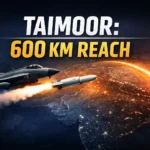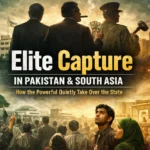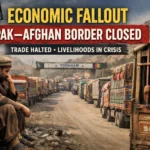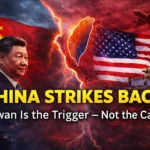26 leaders gather under Beijing’s shadow as Modi seeks economic breathing room and Pakistan eyes opportunity
Date Line: Lahore, Pakistan – September 1, 2025
By: Ch.Haroon Rashid
The recent Shanghai Cooperation Organisation (SCO) summit in Tianjin was far more than a routine diplomatic gathering. Over two intense days from August 31 to September 1, it became a dramatic stage for global power dynamics, a platform for long-held rivalries, and a testament to how economic forces can rewrite foreign policy. The event, which included some 26 country premiers, was a microcosm of a world in transition.
The Unspoken Standoff: India vs. Pakistan
The presence of Indian Prime Minister Narendra Modi and his Pakistani counterpart Shehbaz Sharif at the same venue was a moment that the world’s media had been anticipating. This was the first time the two leaders were in the same place following a recent period of heightened tension.
But there were no handshakes, no bilateral meetings, and no signs of a thaw. Instead, Prime Minister Modi used his plenary address to deliver a sharp message on terrorism, a clear and public jab at Pakistan. He called for “no double standards” in the fight against terrorism, with Sharif sitting just feet away. The SCO’s final declaration also condemned the recent Pahalgam terror attack, a move seen as a diplomatic victory for India. The optics were clear: despite being part of the same bloc, the deep-seated rivalry between India and Pakistan continues to play out on the world stage, with each nation using every platform to advance its position.
The Strategic Pivot: India’s New-Found Friendship with China
Perhaps the most significant development was the surprising shift in the relationship between India and China. For years, Prime Minister Modi’s government has been a vocal critic of Beijing, especially following the 2020 border clashes. However, at the SCO, we saw a clear move towards a pragmatic détente.
Modi and Chinese President Xi Jinping held a bilateral meeting, where they agreed that their nations are “partners, not rivals” and stressed the importance of improving bilateral trade and investment. This pivot is a direct result of the global economic climate and, specifically, the US tariffs.
The Trump Tariffs: A Catalyst for Global Change
The summit’s backdrop was the ongoing global economic turmoil, particularly the impact of new, steep tariffs imposed by the U.S. on a wide range of goods from both India and China. For India, sectors like textiles and gems now face significant headwinds in the American market. This “trade shock” has forced New Delhi to seek alternatives.
This is where China, also feeling the pressure of US tariffs, becomes a strategic partner. The shared experience has created an unlikely common cause, pushing two rivals closer together for mutual economic survival. The message is one of strategic autonomy: India will not be forced to choose one side and will pursue its own economic interests, even if it means seeking closer ties with a geopolitical competitor.
A Coordinated Message to the West
Beyond the regional dynamics, the SCO summit was a powerful, coordinated message to the Western world. With leaders like Vladimir Putin and President Xi Jinping at the forefront, the organization is openly positioning itself as a counterweight to a unipolar, U.S.-led global order.
Putin’s Defiance: For a Russia facing Western sanctions, the SCO is a vital platform to show it is not isolated. Putin used the opportunity to reinforce the call for a “multipolar world,” where no single country dictates global affairs.
China’s Leadership: As host, China cemented its role as the bloc’s economic engine. President Xi’s subtle but clear critique of “Cold War mentality” and “hegemonism” was aimed squarely at the U.S. By promoting alternative financial and trade structures, China is laying the groundwork for a world less dependent on Western institutions.
A New Bloc’s Rise: The unity, even amidst internal rivalries, shows a collective assertion from major powers that they are no longer just reacting to Western policies. They are actively shaping a new global system of governance, trade, and security.
Conclusion
In conclusion, the SCO summit was not just another meeting. It was a clear signal of a changing world, driven by a complex interplay of geopolitical ambition, economic pragmatism, and long-standing rivalries.









